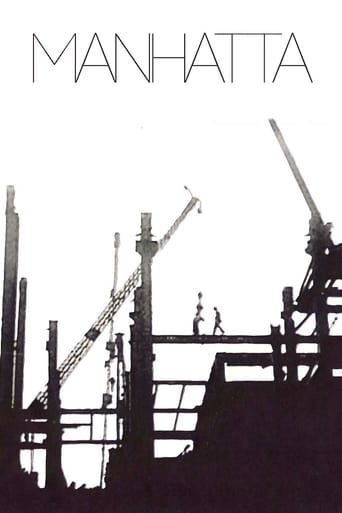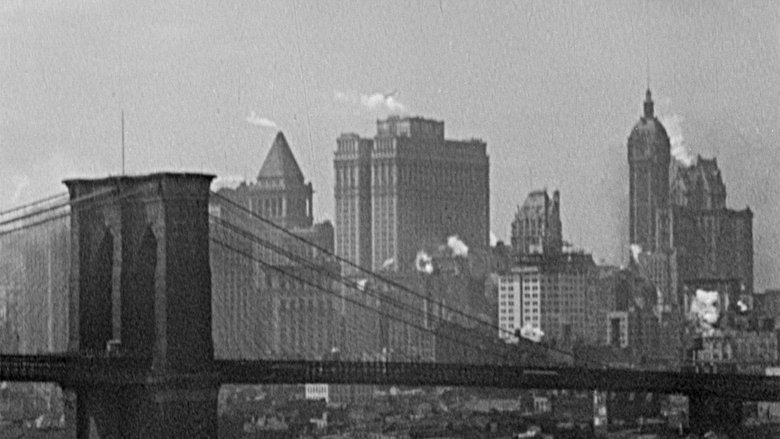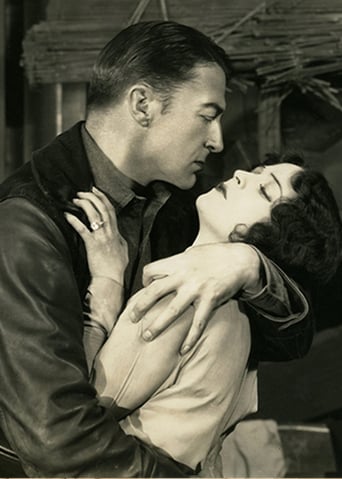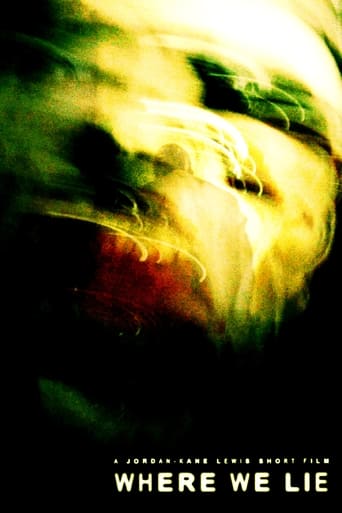

Manhatta (1921)
Morning reveals New York harbor, the wharves, the Brooklyn Bridge. A ferry boat docks, disgorging its huddled mass. People move briskly along Wall St. or stroll more languorously through a cemetery. Ranks of skyscrapers extrude columns of smoke and steam. In plain view. Or framed, as through a balustrade. A crane promotes the city's upward progress, as an ironworker balances on a high beam. A locomotive in a railway yard prepares to depart, while an arriving ocean liner jostles with attentive tugboats. Fading sunlight is reflected in the waters of the harbor. The imagery is interspersed with quotations from Walt Whitman, who is left unnamed.
Watch Trailer
Cast


Similar titles
Reviews
MANHATTA is an unusual short film. It's like the merging of a travelogue with a poem. So, as the camera moves artistically about the city of New York, the scenes are punctuated with intertitle cards that have poetic verse on them that make it all seem grand and majestic.While much of this won't appeal to most viewers, the film is still worth seeing for two important reasons. First, the short is a wonderful historical record of the city. In other films of the era, New York is incidental, in a way. You might see bits and pieces of the city, but the city is not the star. Here, however, you see so much of the town that you wouldn't see otherwise--and much of it is gone today. Second, the film is very artistic in its cinematography--with wonderful aerial shots as well as nicely frames shots of the Brooklyn Bridge and the like.Perhaps not exciting, but a rather important document. And, despite the original negatives being missing and only one print in existence until it was restored, the print looks great!
Make no mistake--the Industrial Revolution's impact of cinema is so profound that it's hardly an impact, as cinema simply wouldn't exist without it. As such, many early films took their subject with the world that had spawned around them, skyscrapers and their creation, factories and their workers, trains and their operation, cars and machinery and smoke. It was as if the world built itself to be photographed in motion, then invented motion pictures.This film is one of those interstitial documents that exist between important texts. It is far removed from the early actualities, but focuses on many of the same subjects with a clearer image. By the time this film came out, editing had come to its own as an art form and this movie didn't particularly add anything to montage that wasn't already recognized. Intertitles were expected. However, this movie did come before Berlin: Symphony of a City and was very inspirational to various filmmakers in the idea of documenting the modern world with an eye towards frame-by-frame meaning and abstract structuralism, which directly links it to the great and famous Man with a Movie Camera.--PolarisDiB
This wonderful documentary offers a glimpse of New York City from a bygone era, when the city had factories, and steam ships we docked in the harbor and when steam and smoke was bellowing into the sky, a time of industry, of power, and economic might. The documentary suggests an industrious people, a mass of humanity inhabiting a great metropolis, uniquely American, bristling with unbounded energy. The great ocean liner entering the harbor, the impressive buildings, some of which still exist today but back then glistening structures, the epitome of modern design, all suggesting a society in which the sky's the limit. This is a great documentary.
Instead of having a filmmaker attempting to be painterly, this poetic gem boasts both a major painter (Sheeler) and a major photographer (Strand) collaborating.This is the earliest view of Manhattan we have that is neither simple-minded documentation nor backdrop to melodrama. The visuals are striking, and stand up well to later, more gimmicky, film realizations of what makes Skyscraper National Park so special.The Walt Whitman title cards would probably have worked better as voiceover narration in the sound era, but offer a strong romantic framework for the powerful imagery. A classic, not to be missed.




